Review for Ghost in the Shell Arise: Borders Parts 1 & 2
Introduction
Can you believe that it’s the 20th anniversary of Ghost in the Shell? And age related depression hits in 5... 4... 3... 2... Following Masamune Shirow’s seminal manga, we got that ground breaking feature film, this year getting its UK Blu-ray debut in original form from Manga, followed by the Innocence sequel. And then we got my favourite of the lot, Ghost in the Shell: Stand Alone Complex, a cyberpunk police procedural anime series that ran for two seasons, spun off two digest movies and the Solid State Society movie too. Intelligent, engrossing, thought-provoking, Ghost in the Shell is a franchise that can just run and run, and following Solid State Society, and the Lucasing of the original film in Ghost in the Shell 2.0, it would have been daft not to expect more from the Major and Section 9. To be honest, I had my fingers crossed for more Stand Alone Complex. The thing about police procedurals is that they’re evergreen, everyone loves a good mystery, and Stand Alone Complex could easily be the Cyberpunk CSI of the anime world.
When Ghost in the Shell: Arise was announced a few years ago as a whole new take on the story, I had my reservations. Could the franchise handle another reboot? It’s was meant to be a prequel as well, telling the story of how Section 9 got together, and given what few details emerged, it turned out that this would be set in a completely different narrative universe from the movie and the Stand Alone Complex continuities. But it was actually the first bit of key art that got me into ‘judging a book by the cover’ mode. The young Major was revealed, looking just like Tetsuo from Akira, and my eyes rolled (incidentally, eye-roll was induced again when I saw the Major’s motorbike in the first episode). My reservations quickly descended into apathy about this reboot, and quite frankly I forgot about it until the check discs showed up. So a quick bit of reading ensued.
Ghost in the Shell: Arise is indeed a new take on the Ghost in the Shell story, ostensibly a prequel, even though in a narrative continuity all its own, it’s set in 2027, two years before the setting of the movie. It comprises 4 separate hour-long episodes, what would have previously been termed OVAs, but they got released theatrically so are technically movies. They’re directed by Kazuchika Kise, who’s also worked as an animator on both Ghost in the Shell movies, and Stand Alone Complex. The screenplays come from Tow Ubukata, writer and screenwriter of Mardock Scramble, and creator of Le Chevalier D’Eon. Manga Entertainment bring us the first two instalments of Ghost in the Shell: Arise in this 2-disc collection, one episode per single-layer Blu-ray.
Border 1: Ghost Pain
Major Motoko Kusanagi of the 501st isn’t having the best of times. She was supposed to get a recommendation from her commanding officer that would see her indenture to the government as a full body cyborg ended, essentially given her freedom. Except Lt Colonel Mamuro was murdered in a mugging. Worse, he was implicated in corruption at the highest level, which makes any of his recommendations suspect. If that isn’t enough, Public Security Section 9 are in charge of the investigation, where Kusanagi feels that it should be kept within the family. But there’s more to this than meets the eye, especially when Kusanagi goes to the cemetery to stop Mamuro’s exhumation, only to find a booby trap in the coffin. Her quick thinking catches Section 9’s commander Aramaki’s eye, and he offers to pay her to investigate the case. But the deeper she gets into the case, the more it becomes apparent that she’s investigating herself.
Border 2: Ghost Whispers
Kazuya Soga is on trial for crimes against humanity, committed during the recent World War. A death sentence is passed down, but neither Soga, nor the men he served with accept that verdict. For them, the truth of the war was significantly different, and the evidence lies in a system called Pandora. The Major has a pressing problem of her own to solve, a Logicoma has been hacked, contrary to Section 9 security, and Aramaki tells her to investigate, and in the process hurry up recruiting her team. Which is when Soga’s unit enact their plan, hacking the country’s traffic control systems and holding them to ransom until the truth about Soga is released. A confrontation on a hacked highway looks to be heading in the wrong direction for the Major, when a US Special Forces agent called VV comes to her rescue, and reveals herself as the one who hacked the Logicoma. She could be a potential recruit for the Major’s new team, but she might not be enough against the former members of Soga’s unit, Batou, Borma and Ishikawa.
Picture
Ghost in the Shell Arise gets a 1.78:1 widescreen transfer at 1080p. It’s as solid a presentation as you would expect for an anime, clear and sharp throughout, with excellent colour reproduction, and for a Funimation sourced transfer, strikingly light on the digital banding. The animation too is top-notch, fluid and vibrant, excelling in the action sequences, imaginative with the world and mecha design, and consistent with the character designs. What you might feel about those re-imagined character designs is a personal matter of course. I for one am not best pleased with the direction they took the characters, with the Major looking too much like a teenage boy, Saito like a punk, Paz nondescript, Togusa chubby, and Aramaki too young in a show set just a couple of years prior to the movie and the Stand Alone Complex series. Of course you have to remember that Arise is its own continuity.
The images used in this review are sourced from the PR, and aren’t necessarily representative of the final retail release.
Sound
You have the choice between DTS-HD MA 5.1 Surround English and Japanese with optional translated subtitles and a signs only track. This differs from Funimation’s release which has Dolby True HD audio, and locks its subs and signs. From the moment that the helicopters pass by overhead, you know you’re in Ghost in the Shell territory, and the action lives up to that opening audio salvo. However the show has been recast for the prequel, in both the English and Japanese versions, and I have to admit that the altered character designs coupled with the different cast didn’t sit well with me. And with the likes of Crispin Freeman and Richard Epcar absent from the English cast as well, that was an uneasiness that persisted across both language versions. However the dialogue is clear and the actors do give decent performances, so anyone not quite as attuned to Ghost in the Shell past will have no problem with this prequel.
The music though is rubbish. Admittedly when you have to live up the great music in the film from Kenji Kawai, and the series from Yoko Kanno, even your best effort might not be enough. But here, the incidental music is forgettable and unremarkable, while the theme music is pathetic. The lyrics are ‘Ghost in the Shell’, with each word separated out by an echo effect, and buried under some dissonant plinky plonky electronica.
The subtitling too is awful! It’s not the usual problem of subtitle clash that has recently plagued Manga’s releases, where there’s not enough room for signs and dialogue, or dialogue from multiple sources, it’s the actual translation that lets the side down. I know that if Funimation released something like this, the Internet would melt from the fan backlash, so I have to believe that Manga created the subtitle translation locally for their release, and ditched the Funimation subtitles. These are subtitles that seem more like transliteration rather than translation, and that done by someone who has never seen any Ghost in the Shell before. The terminology and phraseology that we are used to from the films and Stand Alone Complex has vanished. The first inkling I got was when they started using ‘infiltrate’ instead of ‘hack’ or ‘ghost-hack’. When Soga’s plan to hack the traffic nets and hold the country to ransom goes into effect, the word used, repeatedly in the subtitles is ‘domination’, and I get the feeling that whoever used it, doesn’t know what the meaning of the word actually is. Far too often I had to skip back and try and read a phrase through again, to try and parse it, and it turned what should have been an enjoyable viewing experience into a headache.
Extras
These discs are authored locally by Manga Entertainment, if the whinge about subtitles wasn’t enough of a clue.
You get animated menus where the text options are a little small, and the scene select in particular is a headache to navigate.
Disc 1
Ghost in the Shell: Arise at Anime Expo 2013 lasts 21:15 and is in 1080p. Fans get to gush about the show in short soundbites, but more importantly Production IG CEO Mitsuhisa Ishikawa and director Kazuchika Kise are interviewed about the show. You’re advised to watch the first three instalments together. Great advice that, on a two part collection!
You get the Textless Opening, a Promotional Video, a couple of Newsflash promo pieces, the Theatrical Trailer, and the Teaser Trailer for Border 2, all a minute or so long, and all presented in HD.
Logicoma Beat lasts 2:20, and is this series’ bonus short animation featuring cute sentient tanks.
Disc 2
You get the US Cast and Crew Commentary from ADR Director Zach Bolton, script adaptor Patrick Seitz, and actors Elizabeth Maxwell (Motoko Kusanagi), and Christopher Sabat (Batou). It’s an average commentary from Funimation, and I didn’t listen long enough to see if anything of interest was said past the usual giggles.
There are some more Logicoma antics in Logicoma Court (2:15)
Border 1 – Ghost Pain Cyberbrain IG Night Talk Show lasts 11:08, and has some of the production staff on stage to talk about the show.
Border 1 – Ghost Pain Cyberbrain Cast Night Talk Show lasts 10:52, and does the same with some of the Japanese voice cast.
You get the textless credits, but the rest of it is all promo material, News Flash, Theatrical Trailer, Promotional Video, Commercial, Blu-ray & DVD Spots, Microsoft Surface tie in, and so on and so forth, all ephemeral and forgettable.
All of the extra features are presented in some form of HD, and it’s here you might spot some of the text caption and dialogue and subtitle clash that is so annoying on recent Manga discs.
Conclusion
I’m going to have to watch this again, aren’t I? I had far too much hassle trying to make sense of the subtitling on this collection to really feel like I had enjoyed, or fully experienced the episodes. I’m going to watch the whole thing over again in English, and hopefully that will make more sense, and I can find out whether I like it enough to import a version with decent subtitles. But I very much suspect that I won’t like it, as even without the subtitles, there was enough in this show that rankled me, to make me want to forget it as soon as possible, erase it from the Ghost in the Shell canon. It comes down to Tow Ubukata, the writer and screenwriter of Ghost in the Shell: Arise. It might just be that he’s a one trick pony, that he got lucky with Le Chevalier D’Eon, the lightning of inspiration struck and he created something special, memorable, and long lasting. Since then, the Mardock Scramble movies have been watchable, but on reflection over-plotted and not quite satisfying in how they executed their ideas, while some fans have been vocally critical of the direction he’s taking the second Psycho-Pass series. I can see some of those complaints as equally applicable to the first two instalments of Ghost in the Shell: Arise.
Let’s put to one side the inconsistencies in back-story. Much as it irritates me to see a new version of how the Major was cyberized, an element which has no bearing in how these stories play out, as opposed to the plane crash and Kuze’s arc in 2nd Gig, I have to keep reminding myself that this is a different continuity. But then they start doing things that just don’t make any sense in the Ghost in the Shell universe. In Ghost Pain, when they eventually do exhume the corpse, the Major hacks its cyberbrain. If there’s one thing that the previous incarnations established, it’s that you can’t download from the dead!
Another thing that the previous Ghost in the Shells had going for them was realism. That’s a relative term when you’re talking about a cyberpunk futuristic sci-fi, but the feeling I got was that these events could happen in the real world, if we had the technology. In Ghost Whisper we have a highway car chase/shootout. That’s not unheard of in Ghost in the Shell. But the Major on a motorbike, being chased by a van, spinning the bike around, heading back against the traffic, spinning back to face the moving van, side doors open, jumping the bike through the side doors of the van, shooting two bad guys in the van, and jumping out the other side doors and continuing on her merry way... Suddenly Ghost in the Shell is a misbegotten Michael Bay movie! There’s the android landmines, which I guess would be a less suicidal suicide-bomb, although otherwise an unbelievable waste of technology for just a bomb. All through the first episode, they are a significant impediment to the protagonists, but the antagonist gets his comeuppance when they use an android landmine in his car. Only it’s been modified to blow up his car, but leave him unconscious so that he can be arrested. These are signs of a show that has been seriously dumbed down, to the point where when after Batou and the Major spend the better part of an episode trying to kill each other, the Major offers him a job on her team, he simply says ‘Yeah, okay’ and by this time we as viewers have been conditioned by the repeated stupidity to accept it. Hey, such dumb plot twists work in this universe.
From what I could make out through those damned subtitles, the stories themselves are simple to the point that they could be told in 25 minute Stand Alone Complex episodes. The stories are stretched out to an hour apiece with unnecessary convolution, and pointless complication. Ubukata is in love with his plot twists, but there comes a point where the more elaborate you make a story, the duller it gets. You stop caring about what’s actually happening in the plot, and just watch for the action sequences and pretty animation. There’s also the requirement to re-introduce the members of Section 9, see them as they were in their original careers, Togusa as put-upon cop, Paz as Military Intelligence, Saito as a punk sniper. Admittedly I did enjoy how the first story played out, with the Major eventually finding out that her own memories had been hacked, and that she’d been investigating herself all along. But then Ubukata uses the exact same plot twist in the second episode. There’s more to Ghost in the Shell than just ghost hacks.
The show also loses its intellectual credentials. The first film was a philosopher’s dream, the nature of the soul, of the melding of machine and life. The second film spelt it out, with characters actively quoting at each other through the film. The first season of Stand Alone Complex would have libraries emptied of their JD Salinger shelves, while the Second Gig really tied into politics and revolutionary thinking. Ghost in the Shell Arise is devoid of that kind of depth. It’s all surface and action with nothing at all contemplative.
Manga Entertainment’s release of Ghost in the Shell: Arise may as well be dub only. The subtitles may be legible, but they’re at times meaningless, especially for someone who knows what to expect from the Ghost in the Shell universe. The English dub is good enough to watch, although I still miss the original cast. However, a part of me is thankful that they’re not associated with something this dumbed down. Ghost in the Shell: Arise is fun to watch, in the way that a Michael Bay movie is fun to watch, and if you’re watching the dub version, I’d give it a solid 7 out of 10. Those subtitles are terrible though, hence my final mark.
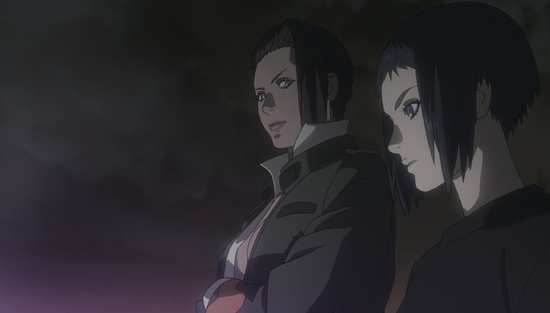
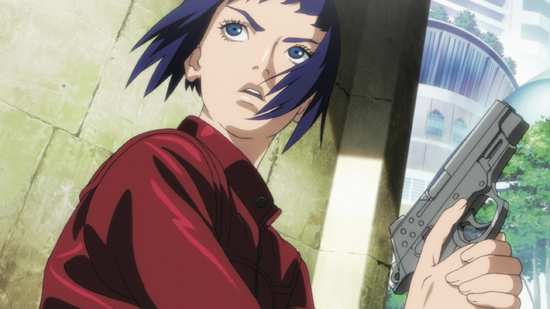
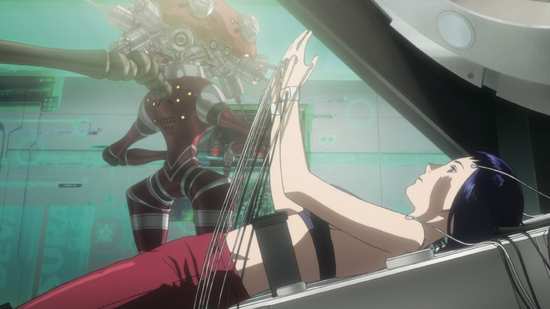
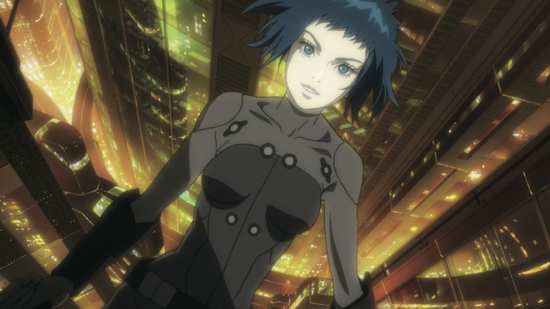

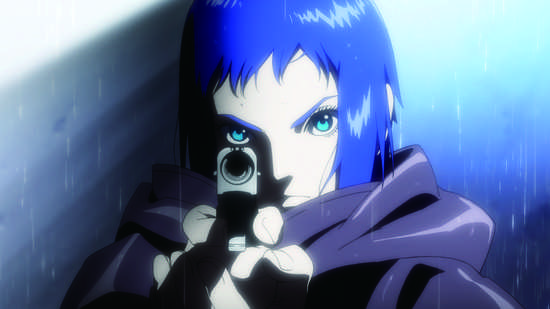

Your Opinions and Comments
Be the first to post a comment!